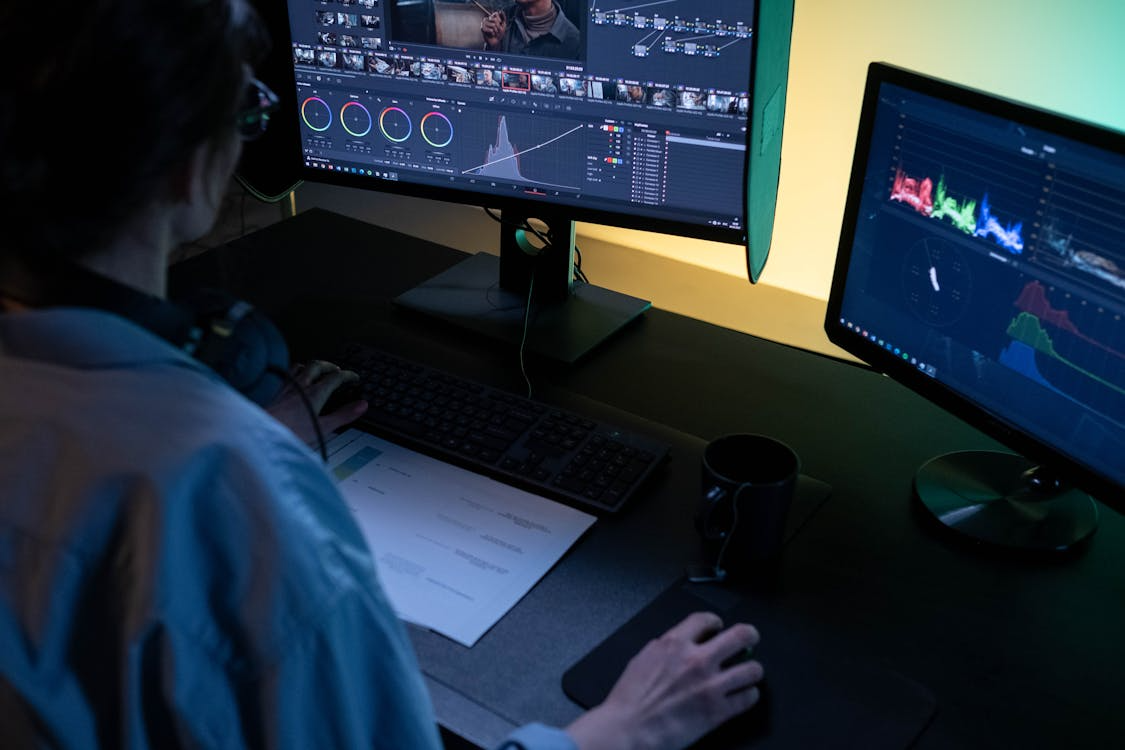The global surge of short-form video content, particularly short dramas, has transformed entertainment consumption. As production companies race to meet the demand for localized content in international markets, cost control has become a critical factor. One pivotal decision is whether to use AI voice acting or traditional human voice acting for dubbing. Both approaches have distinct advantages and drawbacks, and the choice can significantly impact a project’s quality, budget, and audience reception. This article explores the strengths and weaknesses of AI and human voice acting, supported by real-world examples, to provide a clear, authoritative comparison.
The Rise of AI Voice Acting
AI voice acting, powered by advancements in text-to-speech (TTS) technology and machine learning, has become a game-changer for short drama production. Companies like ElevenLabs and Respeecher have developed AI systems capable of generating highly realistic, multilingual voiceovers at a fraction of the cost of human actors. The appeal of AI lies in its scalability and efficiency, particularly for companies producing high volumes of content for diverse markets.
Advantages of AI Voice Acting
Cost Efficiency
AI voice acting drastically reduces production costs. Hiring human voice actors involves fees for talent, studio time, and post-production editing, which can accumulate quickly, especially for multilingual projects. AI, on the other hand, requires only an initial investment in software or licensing fees. For example, a 2024 case study from a Chinese short drama platform expanding into Southeast Asia revealed that using AI dubbing cut localization costs by 60%, allowing the company to dub 50 episodes in five languages within a week.Speed and Scalability
AI can generate voiceovers almost instantly, enabling rapid turnaround times critical for short dramas, where release schedules are often tight. Unlike human actors, AI doesn’t require scheduling, rehearsals, or multiple takes. For instance, a Singapore-based streaming service used AI to dub a 20-episode drama into Thai, Indonesian, and Vietnamese in just three days, a process that would have taken weeks with human actors.Consistency Across Languages
AI systems can maintain consistent tone, pitch, and style across multiple languages, ensuring a uniform auditory experience. This is particularly valuable for serialized short dramas where character voices need to remain recognizable. A 2025 report from a localization tech firm noted that AI dubbing ensured 95% consistency in character voices across 10 languages for a popular short drama series, compared to 80% with human actors due to natural variations.Customizability
AI allows producers to fine-tune voices to match specific character traits, such as age, gender, or emotional tone, without hiring additional talent. Platforms like Descript offer tools to adjust pitch, speed, and even emotional inflection, providing flexibility that human actors may not always achieve cost-effectively.
Drawbacks of AI Voice Acting
Lack of Emotional Depth
Despite significant advancements, AI voices often struggle to convey the nuanced emotions that human actors deliver naturally. Subtle inflections, cultural nuances, and spontaneous reactions are challenging for AI to replicate. For example, in a 2024 Korean short drama dubbed into Spanish using AI, viewers on social media criticized the lack of emotional resonance in key dramatic scenes, describing the delivery as “robotic.”Cultural and Linguistic Limitations
AI systems may misinterpret idiomatic expressions or cultural references, leading to awkward or inaccurate translations. A 2023 case involving a Chinese short drama dubbed into Arabic using AI resulted in several mistranslations of colloquial phrases, alienating viewers and requiring costly revisions.Audience Perception
Some audiences are sensitive to AI-generated voices and may perceive them as inauthentic, which can harm a drama’s reputation. A 2025 survey by a media analytics firm found that 62% of viewers in Europe preferred human-dubbed content, citing a stronger emotional connection, despite acknowledging AI’s clarity.
The Enduring Value of Human Voice Acting
Human voice acting remains the gold standard for many producers, particularly those prioritizing quality and audience engagement. Professional voice actors bring a level of artistry and emotional intelligence that AI cannot yet fully match, making them a preferred choice for high-budget or culturally sensitive projects.
Advantages of Human Voice Acting
Emotional Authenticity
Human actors excel at delivering emotionally compelling performances. Their ability to interpret scripts and infuse dialogue with empathy, humor, or intensity creates a deeper connection with audiences. For example, the 2024 global release of a Thai short drama series dubbed by professional actors in English received widespread praise on platforms like X for its heartfelt delivery, contributing to its viral success in North America.Cultural Nuance
Human actors, especially those native to the target language, can adapt dialogue to reflect cultural context, slang, and humor that resonate with local audiences. A Brazilian short drama dubbed into Japanese by native voice actors in 2023 was lauded for its seamless integration of local idioms, boosting its popularity on streaming platforms.Brand Prestige
Employing well-known voice actors can enhance a project’s marketability. For instance, a 2025 Indian short drama series dubbed into English featured a prominent voice actor, whose name recognition drove significant viewership in the UK, according to streaming analytics.
Drawbacks of Human Voice Acting
High Costs
Human voice acting is expensive, particularly for multilingual projects. Fees for talent, studio recording, and editing can strain budgets, especially for smaller companies. A 2024 report from a localization agency estimated that dubbing a 10-episode series into three languages with human actors cost $50,000, compared to $10,000 with AI.Time-Intensive Process
Scheduling actors, recording sessions, and post-production editing can take weeks or months, delaying release schedules. A Malaysian production company reported in 2025 that human dubbing for a 15-episode drama into English and Mandarin took six weeks, compared to one week with AI.Inconsistency Across Languages
Different actors across languages may interpret the same character differently, leading to variations in tone or personality. This was evident in a 2023 Turkish short drama dubbed into multiple European languages, where viewers noted discrepancies in character portrayal, reducing the series’ cohesive feel.
Striking a Balance: Hybrid Approaches
Some companies are exploring hybrid models, combining AI and human voice acting to balance cost and quality. For example, a 2025 Chinese short drama series used AI for secondary characters’ dialogue to save costs, while hiring human actors for lead roles to ensure emotional impact. This approach reduced expenses by 40% while maintaining high audience satisfaction, according to viewer feedback on X.
Conclusion
The choice between AI and human voice acting for overseas short dramas hinges on balancing cost, speed, and quality. AI offers unparalleled efficiency, scalability, and cost savings, making it ideal for high-volume, budget-conscious projects, as seen in rapid localizations for Southeast Asian markets. However, its limitations in emotional depth and cultural nuance can detract from audience engagement. Human voice acting, though costlier and slower, delivers authenticity and cultural resonance, as evidenced by the success of Thai and Indian dramas in global markets.
Tools like Artlangs are revolutionizing this landscape by empowering short drama producers to navigate these trade-offs effectively. Supporting over 230 languages for subtitle translation and dubbing, Artlangs enables seamless localization, combining AI-driven efficiency with options for human oversight to ensure cultural accuracy and emotional impact. By leveraging such platforms, producers can adopt hybrid approaches—using AI for speed and scale while reserving human talent for high-impact roles—to optimize costs and captivate global audiences. As technology and artistry converge, solutions like Artlangs are paving the way for short dramas to thrive in international markets.











